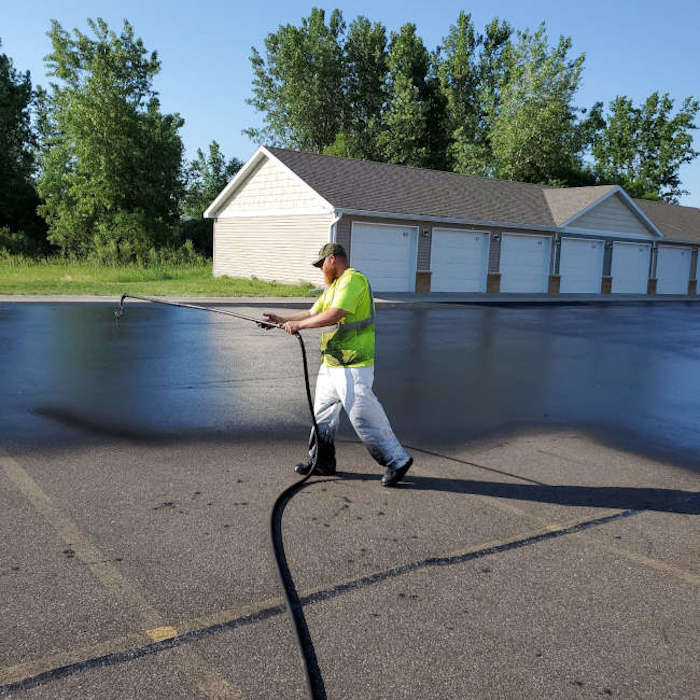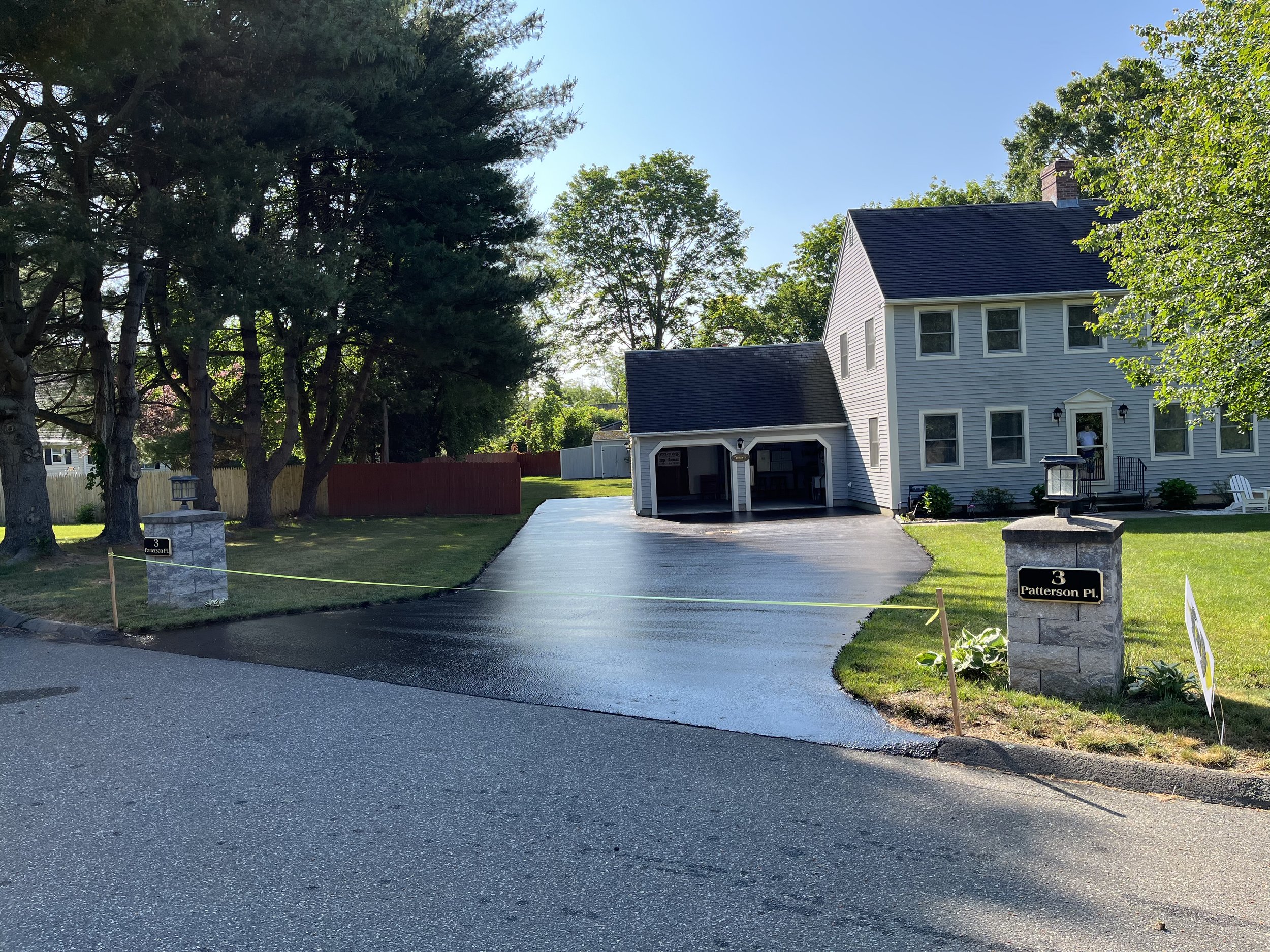Cold Mix Asphalt Vs. Hot Mix Asphalt: Which Is Right for You?

Make-up Differences
Cold mix and warm mix asphalts differ dramatically in their composition, with unique characteristics that affect their efficiency and applications. Cold mix asphalt is generated by emulsifying the asphalt binder with water and an emulsifying agent before mixing it with accumulation. This approach permits the asphalt to be workable at lower temperature levels, making it perfect for momentary fixings and for use in colder weather condition problems. Warm mix asphalt, on the various other hand, is made at high temperatures, usually in between 300-350 ° F, which aids to attain far better compaction and a more resilient final product. The hot mix asphalt manufacturing procedure entails warming the accumulation and asphalt binder independently before incorporating them at the asphalt plant.
Moreover, cold mix asphalt often tends to be less thick and extra adaptable than warm mix asphalt. This versatility makes it much better suited for areas with greater degrees of motion, such as driveways or roads with heavy web traffic. On the other hand, warm mix asphalt is recognized for its high toughness and resistance to rutting and splitting, making it a favored choice for highways and high-traffic roadways where durability is vital.
Setup Process Differences
The procedure of setting up cold mix and warm mix asphalt displays noteworthy variances in their treatments and demands. Cold mix asphalt, being a much more flexible product, can be applied directly from the bag or container onto the pit or damaged location. It requires marginal preparation work, such as cleaning the location and compacting the cool combine with hand devices. This makes it a practical option for fast and short-term fixes. In contrast, warm mix asphalt requires a more intricate installation procedure. It involves warming the mix to high temperature levels before laying it down on a properly ready base. The preparation consists of condensing the base, applying a tack layer, and using hefty equipment like pavers and compactors for a smooth and resilient finish. Because of the home heating requirements, warm mix asphalt installations are normally carried out by experts with specialized devices, making certain a more long-term and structurally click here for more audio result.
Resilience and Durability Aspects
When thinking about asphalt choices, sturdiness and durability are essential factors to review for enduring pavement efficiency. Hot mix asphalt (HMA) is known for its phenomenal toughness and durability.
In regards to durability, HMA generally outperforms CMA because of its exceptional toughness and resistance properties. HMA pavements have a longer service life, needing less regular repairs and upkeep, which can translate to set you back financial savings in the lengthy run. Additionally, HMA sidewalks are more quickly customizable to fulfill certain project demands, further improving their durability.
Price Considerations
Thinking about the financial ramifications is a crucial element when reviewing the choice in between warm mix asphalt (HMA) and cold mix asphalt (CMA) for sidewalk tasks. While the initial expense of warm mix asphalt is generally greater than that of cool mix asphalt, HMA frequently supplies an extra affordable option in the future as a result of its superior sturdiness and long life. HMA is recognized for its ability to endure heavy web traffic lots and rough weather conditions, decreasing the demand for regular repair work and maintenance. On the other hand, chilly mix asphalt is extra economical ahead of time yet may need even more regular patching and resurfacing, bring about greater upkeep prices with time.
Along with material costs, it's important to think about the expenses connected with installment and upkeep when comparing HMA and CMA. HMA generally calls for specific equipment and experienced labor for correct installment, which can affect overall task he said expenses. On the other hand, CMA is easier to function with and can commonly be applied making use of easier techniques, possibly lowering installment costs. Ultimately, the choice between HMA and CMA must think about not simply the preliminary price however additionally the lasting financial effects to determine one of the most affordable alternative for the particular sidewalk project.
Environmental Effect Contrast
Contrast of the environmental effects in between warm mix asphalt (HMA) and cold mix asphalt (CMA) exposes distinct differences in sustainability methods. HMA manufacturing calls for high temperatures, causing raised power consumption and greenhouse gas discharges. The process additionally launches unpredictable organic compounds (VOCs) and dangerous air contaminants (HAPs) right into the ambience. On the other hand, CMA is generated and used at lower temperature levels, lowering power use and exhausts significantly. The lower production temperatures of CMA lead to reduced fuel usage and lower levels of CO2 emissions, making it a more eco-friendly choice.
Additionally, the use of CMA often entails recycling existing asphalt sidewalk, promoting source preservation and reducing the quantity of waste sent to landfills. By choosing for CMA over HMA, roadway building projects can add positively to ecological conservation initiatives.
Conclusion
Finally, the choice between cool mix asphalt (CMA) and warm mix asphalt (HMA) relies on numerous aspects such as make-up, installation process, resilience, durability, price, and environmental effect. asphalt repair. While CMA provides a fast and cost-efficient option for small repairs, HMA guarantees remarkable durability and longevity for rush hour areas. Think about these aspects meticulously to determine which sort of asphalt is the best option for your paving requires

Considering the monetary effects is an click here for more info important facet when assessing the option in between hot mix asphalt (HMA) and chilly mix asphalt (CMA) for sidewalk tasks. While the initial expense of warm mix asphalt is generally greater than that of chilly mix asphalt, HMA often offers an extra cost-efficient service in the long run due to its remarkable durability and longevity. asphalt patch repair.Contrast of the ecological effects between hot mix asphalt (HMA) and chilly mix asphalt (CMA) discloses distinctive differences in sustainability practices.In final thought, the option between cool mix asphalt (CMA) and warm mix asphalt (HMA) depends on various factors such as composition, setup process, durability, long life, price, and environmental effect